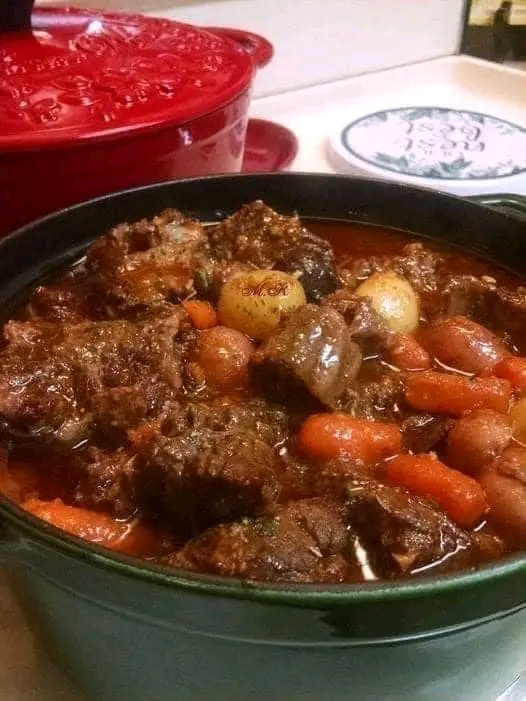
Recipe: Traditional Beef Stew
History of Beef Stew
Beef stew is a hearty and comforting dish that has been enjoyed for centuries across various cultures. The origins of beef stew can be traced back to medieval Europe, where it was a staple food for peasants and royalty alike. Stews were cooked slowly over an open fire, utilizing tougher cuts of meat that required extended cooking times to become tender.
This dish evolved over time, with different regions adding their own local ingredients and spices. For example, the French Boeuf Bourguignon is a famous variation that includes red wine, while the Irish typically add Guinness stout to their Irish Stew. Beef stew has remained popular due to its ability to nourish and warm the body, especially in colder climates.
Benefits of Beef Stew
- Nutrient-Rich: Beef stew is packed with protein from the beef, as well as vitamins and minerals from the vegetables like carrots, potatoes, and onions.
- Heart Health: When made with lean cuts of beef, this stew is a good source of essential nutrients like iron, which is vital for red blood cell production.
- Comforting and Satisfying: The warmth and rich flavor of beef stew make it a perfect comfort food, especially during the winter months.
- Versatile: You can customize the stew by adding your favorite vegetables or spices, making it a versatile dish that can suit various tastes and dietary needs.
Ingredients
- 2 lbs (900g) beef chuck, cut into 1-inch cubes
- 2 tbsp olive oil
- 1 large onion, diced
- 3 cloves garlic, minced
- 4 large carrots, peeled and cut into 1-inch pieces
- 4 large potatoes, peeled and cut into 1-inch cubes
- 1 cup pearl onions
- 1 cup mushrooms, sliced
- 4 cups beef broth
- 1 cup red wine (optional)
- 2 tbsp tomato paste
- 2 bay leaves
- 1 tsp dried thyme
- Salt and pepper to taste
- 2 tbsp all-purpose flour (optional, for thickening)
- Fresh parsley, chopped (for garnish)
Methods
- Prepare the Beef:
- Heat 1 tablespoon of olive oil in a large pot or Dutch oven over medium-high heat.
- Season the beef cubes with salt and pepper.
- Add the beef cubes in batches, browning them on all sides.
- Remove the beef and set aside.
- Sauté the Vegetables:
- In the same pot, add the remaining olive oil.
- Sauté the onions, garlic, and pearl onions until they become translucent.
- Add the carrots, potatoes, and mushrooms, stirring occasionally.
- Combine Ingredients:
- Return the browned beef to the pot.
- Stir in the tomato paste, ensuring it evenly coats the meat and vegetables.
- Pour in the beef broth and red wine, if using.
- Add the bay leaves and thyme.
- Simmer:
- Bring the mixture to a boil, then reduce the heat to low.
- Cover the pot and let it simmer for about 2 hours, or until the beef is tender and the vegetables are cooked through.
- Stir occasionally to prevent sticking.
- Thicken the Stew (Optional):
- If you prefer a thicker stew, mix 2 tablespoons of flour with a small amount of water to form a slurry.
- Gradually stir the slurry into the stew, cooking for an additional 10 minutes until it thickens.
- Final Touches:
- Taste and adjust the seasoning with salt and pepper as needed.
- Remove the bay leaves.
- Garnish with fresh parsley.
- Serve:
- Serve the stew hot with crusty bread or over rice for a complete meal.
Tips & Variations
- Vegetarian Version: For a vegetarian version, substitute the beef with hearty vegetables like butternut squash, and use vegetable broth instead of beef broth.
- Gluten-Free: Use cornstarch instead of flour to thicken the stew.
- Slow Cooker Option: After browning the beef and sautéing the vegetables, transfer everything to a slow cooker and cook on low for 6-8 hours.
Conclusion
Beef stew is a timeless dish that brings together the warmth and comfort of a home-cooked meal. Its rich flavors, robust nutrients, and versatility make it a staple in many households around the world. Whether you stick to the traditional recipe or explore various adaptations, beef stew is sure to become a favorite in your culinary repertoire. Enjoy!